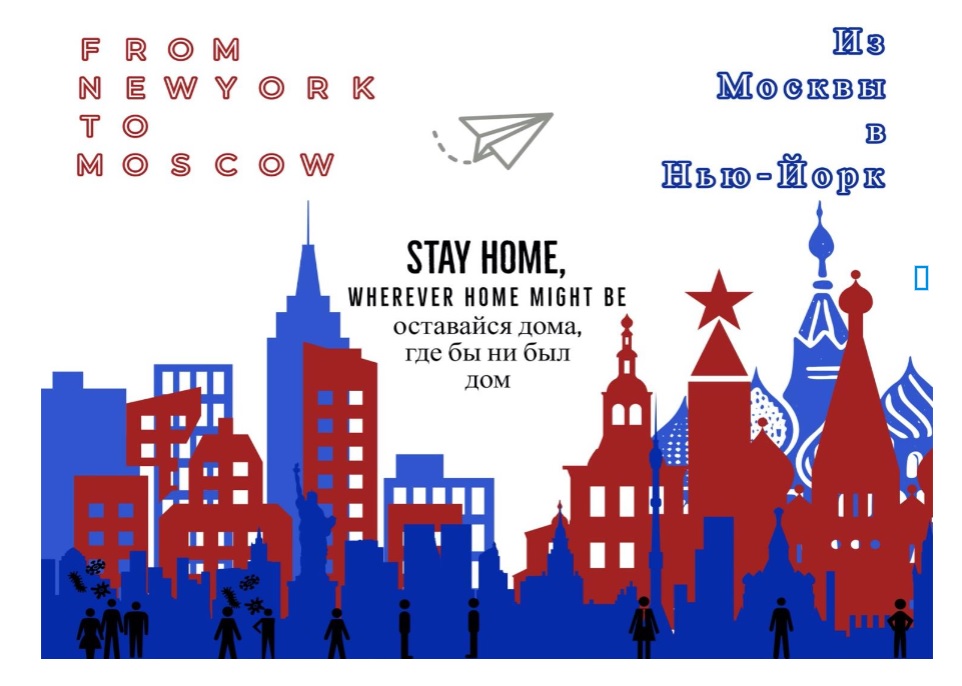
One of the “Culture, College, and COVID-19 Prevention” public service announcements created by Discussion & Group Dynamics students (Meredith Harrigan)
Pandemic travel restrictions didn’t interfere with an international learning experience that Professor Meredith Harrigan planned for her communication Discussion & Group Dynamics students this semester. SUNY Geneseo undergrads in the class have collaborated with Russian students at Moscow’s Higher School of Economics (HSE) on a virtual group project.
“The goal of the course is to help students understand the intricacies of collaboration, including how to engage in negotiation, conflict management, problem-solving, and decision making,” Harrigan says. “It’s a relational-based course, which involves getting to know each other as individuals. They’re thinking about different identities, who we are as individuals, and what our unique strengths are.”
Harrigan’s partnership with HSE’s Professor Mira Bergelson was forged several years ago through a SUNY Collaborative Online International Learning (COIL) grant program. Students’ opportunity to connect with others this semester took on new significance amid the social isolation caused by the COVID-19 pandemic.
“It’s rejuvenating,” Harrigan says. “It’s taken us out of our little bubbles in our rooms, and it’s allowed us to connect with others in a non-traditional learning environment. Students jumped right into it.”
This year, the collaboration’s project was “Culture, College, and COVID-19 Prevention.” Geneseo and HSE students worked together to create a public service announcement for a fictional university with a large US and Russian student cohort that encouraged the campus community to help reduce the spread of COVID-19.
“The ad needs to speak to both cultures, making it an exercise that allows students to broaden their perspective,” Harrigan says. “It’s about being aware of value differences in communication and how expectations might influence our communication with one another. Students become more mindful of the components involved in effective collaboration.”
Harrigan says there’s significant value in colleges developing virtual collaborations like the HSE partnership or virtual study abroad programs, as they allow more equitable access to international learning opportunities and prepare students to thrive in a global workforce.
Discussion & Group Dynamics will be offered again in the fall semester. The three-credit class, which is initially restricted to communication majors during registration, is limited to 50 students.
